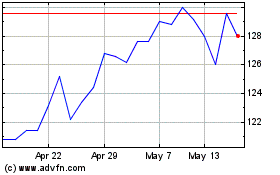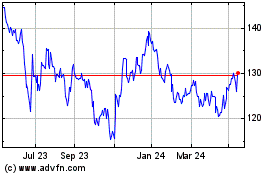investment is calculated after taking account of all such
costs.
Differentiation of Operating Model
The operational structure of the Company and the investment
entities it invests in and through is designed to align the
interests of those entities with the Company. The Company's
preferred operational structure and the structure of the Investment
Adviser and its associates (acting as investment adviser, operator
and asset manager) effectively extends the Board's oversight to the
underlying asset management and finance teams enabling it to be an
active rather than a passive investor.
The Investment Adviser and its associates employ more than 80
personnel, the majority to support the Company and its investment
entities in the provision of financial and asset management
services. This operating model contrasts with competitor models
that have tended to employ smaller teams and instead outsourcing
some or all of such services (often to associates of the
construction/facilities management firms already providing
potentially conflicting services to the investment entities).
The Company believes its operating structure differentiates it
within the market and provides it with greater control of the
performance of its underlying investments (for example management
of lifecycle cost risk or control of contract variations). The
Investment Adviser acts on the Company's behalf, managing the
day-to-day issues and interfaces between public sector client and
subcontractor supply chain partners. This enables the Company,
without additional cost, to:
> De-risk the investment entity through managing the
pass-down of risk to subcontractor supply chain
> Oversee service and availability level
> Have greater confidence in the deliverability of forecast cash flow
> Enhance returns through hands-on management of contractual
variations and additional service requirements
> Align day to day operational management, financial
management, tax and accounting, issue resolution and contract
management with investment objectives (not just board
representation)
> Avoid conflicts of interest between asset and finance
management and the subcontractor supply chain
The Company's operating model is also differentiated through the
capability of the Company's Investment Adviser to originate new
primary market transactions which provide the Company with access
to off-market opportunities not afforded to other infrastructure
investment funds. These opportunities typically take three years or
more to gestate and are regularly reviewed between the Company and
its Investment Adviser. Under the terms of the Investment Advisory
Agreement the Company has a right of 'first look' at investments
fitting its investment mandate that are being realised by Amber.
This has been extended to include opportunities by the Investment
Adviser with Hunt (as described in the Chairman's Letter). The
access that the Company has had to such 'primary' opportunities
(alongside the access that the Company has, in common with other
funds, to 'secondary' opportunities) broadens the Company's
opportunity set for new investments.
This allows the Company to benefit from:
> Primary investment opportunities developed with the
Company's long-term strategy and objectives in mind
> A greater ability to structure new projects to meet returns and inflation linkage requirements
> Transactions structured to be low risk based on direct
asset management and contract management experience
> Experienced finance, accounting, legal, construction and
facilities management expertise familiar with developing new
investments and managing them. This leads to the ability to perform
due diligence analysis on investments offered for sale in the
secondary market based on greater hands-on experience
> Access to senior debt as well as equity and subordinate debt investment opportunities
Public Private Partnerships/Private Finance Initiative
Public Private Partnerships ('PPP') and projects procured in the
UK under the Private Finance Initiative ('PFI') regime typically
have the following characteristics although individual transactions
may exhibit some variations. Offshore transmission assets have
similar characteristics but to date have been acquired by the
Company with all construction works complete at the time of
investment.
> Open competitive process to appoint infrastructure provider
> Concession contracts or license based long-term revenue
> Income based on availability of the infrastructure asset
and provision of services to specification with deductions for poor
performance/availability
> Income fully or partially linked to inflation
> Procured by the public sector as a purchaser of services -
the public sector determines the performance standards it requires
(e.g. number and area of classrooms, standard of cleanliness etc)
but does not determine how this is achieved
> The public sector passes substantially all the risks
associated with cost overruns or construction delay to the
Investment Entity, which in turn passes these on to
construction/facilities management firms (subject to liability
caps); or puts in place suitable insurances to manage its own
exposure
> The asset manager is the party responsible for managing the
interface between the various parties for the benefit of the
investment entity
During construction, equity investment, shareholder loans and
senior loans are used to finance construction activity,
relevant
insurances and entity administration costs. Once the
infrastructure asset is available for use, the investment entity
receives revenues from the public sector.
During the operational phase, the investment entity makes
payments for the provision of operations and maintenance services
by facilities management companies and pays insurance premiums.
PPP/PFI entities generally do not have their own employees.
Instead a sub-contracted asset manager is normally engaged to
provide financial and physical management of the asset and act as
the key interface between stakeholders and contracting parties.
The asset manager role is often performed by an associate of the
construction company or facilities management company although in
projects where the Company invests this role is usually performed
by an associate of the Investment Adviser which serves to reduce
conflicts of interest and increase alignment between the Company
and its Investment Adviser.
Within a PFI/PPP project, the breakdown of project costs in the
operational stage will vary depending on the nature of the services
required (e.g. a school typically being less service intensive than
a hospital) but in a typical UK school PFI project approximately
64% of project revenues are applied to financing (both debt and
equity), about 32% to services (building maintenance, cleaning,
lifecycle replacements) and approximately 4% to other costs such as
insurance etc.
Key Performance Indicators
The Company has identified ten priorities to assist in meeting
its Key Objectives. In order to assess annual performance in
meeting these objectives the Company reviews semi-annually its
performance against the following key performance indicators
('KPIs'). The KPIs and the relative performance for the 2014
financial year are summarised below and further details of each of
these elements are provided in the sections that follow:
Key Performance Page
Key Objectives Indicator 2014 Performance Reference
Investor Returns
Deliver sustainable
long-term returns
to shareholders
* Focus on providing shareholders with predictable,
and * Achieved targeted fully covered cash dividend of
where possible growing dividends * Maintain and enhance distributions to shareholders 6.30p/share, a c.2.5% increase on 2013 dividend 20-27
* Deliver capital value enhancement where possible * Total shareholder return * Achieved. The total shareholder return since IPO is
98.5%
* NAV and NAV p/share
* NAV of GBP1,062.1 million and NAV per share of
127.0p/share an increase of 3.25%
========================================================= ============================================================== =============================================================== ==========
Key Performance Page
Strategic Priorities Indicator 2014 Performance Reference
Active Asset Management
Focus on delivery
of anticipated
International Public Par... (LSE:INPP)
Historical Stock Chart
From Jun 2024 to Jul 2024

International Public Par... (LSE:INPP)
Historical Stock Chart
From Jul 2023 to Jul 2024
